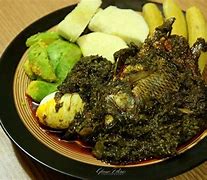Some of our economical food have become luxury items due to inflation.
The cost of some of Ghana’s most popular street delicacies has significantly increased in recent months, according to Ghanaians. The cost of these formerly inexpensive meals and snacks has increased, placing a burden on regular customers. Popular foods like fried yam, waakye, acheke, kelewele, and gobe (beans and fried plantains) are now being sold for prices that many people find intolerable.
Let’s examine these price increases and their implications for Ghanaians in more detail.
1. Gobe (Beans and Fried Plantain)
Gobe, a simple yet satisfying dish of beans paired with fried plantain, has become shockingly expensive. Once sold for a modest 2 cedis, it’s now approaching 50 cedis, depending on where you purchase it. This once-accessible meal, cherished by students and workers alike for its affordability and nutritional value, has seen an almost prohibitive rise in price. Vendors cite increasing costs for beans, plantains, oil, and fuel, all contributing to the surge. For many, this significant price increase means that Gobe is no longer the easy, affordable option it used to be.
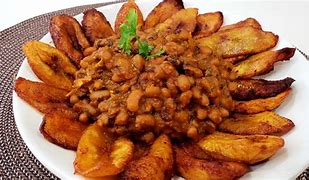
2. Waakye
A mainstay of Ghana’s street food scene for a long time is waakye, a traditional dish made with rice and beans. It used to just cost 5 cedis, but these days it’s hard to get anything for less than 10 or 15 cedis, and in certain places, the cost is considerably higher.
A pack is sold for GHC150 somewhere. Inflation, the growing cost of ingredients, and the additional expenditure of operating a food business in the current economic environment are all responsible for this price increase. Even though waakye is still a popular meal, many customers are increasingly debating whether the cost is justified, particularly in light of rising living expenses.
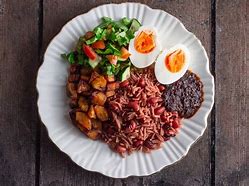
3. Acheke – From Affordable to Luxurious
The price of acheke, a traditional meal made from fermented cassava, has skyrocketed. Comfort food that used to be inexpensive now costs between 250 and 350 cedis. Cost increases for oil, fish, and other accompaniments, as well as a rise in cassava prices, are the main causes of the price hike.
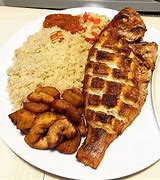
Many people view acheke as a rare treat rather than a typical meal because of its high cost. Vendors are struggling to offer this dish at a price that will attract repeat business while simultaneously paying for rising overhead and ingredient expenses.
ICYMT: “Families affected by these wildfires will receive $770” – President Joe Biden
4. Kelewele
Kelewele (spicy fried plantains), which was formerly an affordable and satisfying snack, has also suffered a significant price spike. Previously costing about 10 cedis for a hearty dish, the price has increased significantly, with some servings delivering less than half the quantity for the same or more.
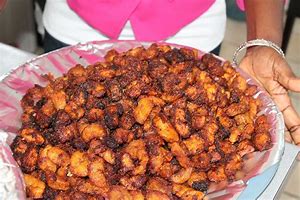
Customers are dissatisfied with the reduced servings, even if the price of plantains has increased due to rising costs. Many people find it difficult to defend the purchase of this once-affordable snack due to the price increase and the smaller serving sizes.
5. Fried Yam
Fried yam, another street food favourite, has also become much more expensive in recent months. With the price of yam soaring, vendors are forced to adjust their prices accordingly. Once a snack that could be enjoyed on a regular basis, fried yam is now considered a luxury for some. The rising cost of yams, along with the added costs of oil and labour, has resulted in a price that’s no longer affordable for everyone. This has led many to cut back on the frequency with which they purchase fried yam, a dish that used to be a staple in Ghanaian diets.
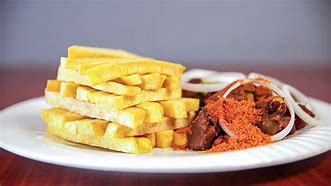
Why Are These Food Prices Rising?
The depreciation of the local currency, rising production costs, and inflation are the main causes of the increase in food prices. Key commodities including beans, plantains, yams, and cassava have seen a significant increase in price, and vendors are forced to pass those costs on to customers due to the rising costs of operating food companies, which include labor and transportation. Furthermore, disruptions in the global supply chain have had a knock-on effect, which has further impacted Ghanaian food prices.
What Does This Mean for Ghanaians?
Ghanaians’ daily life are directly impacted by the growing prices of street food. These were inexpensive, satisfying lunch or dinner options that were staples for many. Customers are being pushed to make tough choices about where to spend their money as prices climb. The price increases are especially troubling for many who depend on these foods as their main source of nutrition.
Important concerns regarding the future of street cuisine in Ghana are also brought up by this movement. Will vendors find ways to lessen the impact on customers, or will they keep raising prices in reaction to growing costs? Despite the higher cost, would Ghanaians look for alternatives or figure out how to keep eating these traditional foods?
SOURCE: PULSE GHANA
















